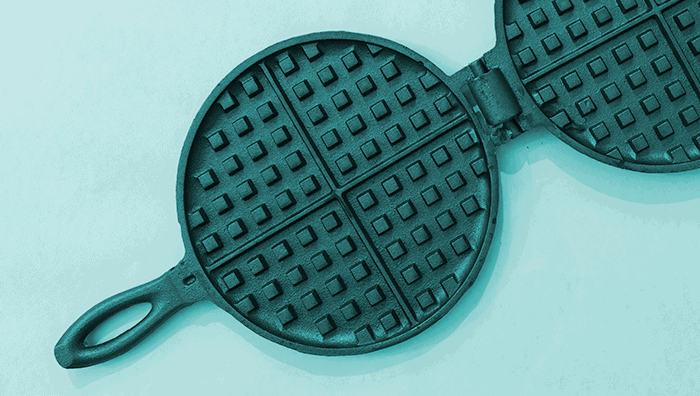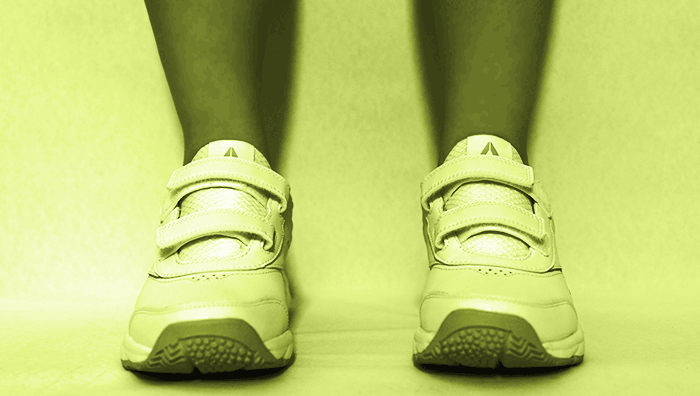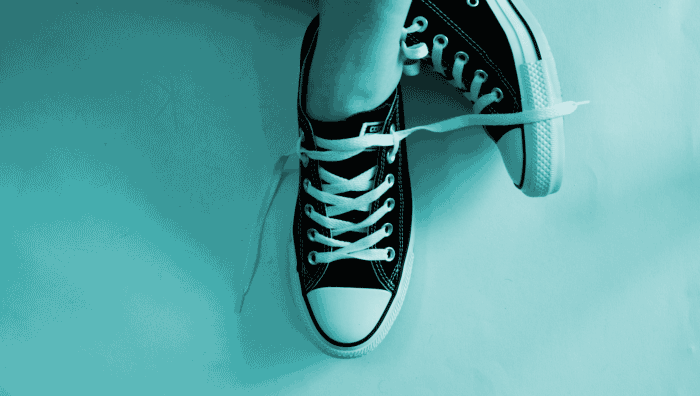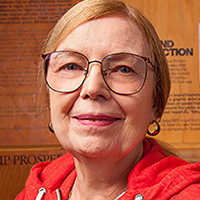00:06 Walter Isaacson The year was 1984. Michael Jordan was a rising basketball star, about to launch his NBA career with the Chicago Bulls. That summer, the US Olympic Basketball Team asked him to play for them. The result? A gold medal. And a few months later, Sports Illustrated put him on its cover beside the caption, A Star is Born. But in between those two milestones, one of the most revolutionary deals in sports history would be forged between Michael Jordan and a little sneaker company from Oregon. It would disrupt the world of sports, change the face of marketing, and launch a cult following that would transform the humble sneaker into an icon, and it all very nearly didn’t happen.
01:04 Walter Isaacson It started in August. Michael Jordan was in LA training with the US Olympic Basketball Team. His assistant coach, George Raveling asked him for a favor that Jordan wasn’t too keen on. Raveling wanted him to meet with a representative from Nike, to talk about endorsing a new sneaker. Jordan’s hesitation, he’d never even tried on a Nike shoe. He wore Converse on the court in North Carolina, but his true love was Adidas. He wore them as a teenager, and was passionately loyal to the brand. But, he respected Raveling’s opinion so a dinner was scheduled between Raveling, Jordan, and Nike’s basketball advisor, Sonny Vaccaro.
01:54 Walter Isaacson: They met at an Italian restaurant in Santa Monica. It didn’t start well. Jordan thought that Sonny Vaccaro looked like a mobster. He also didn’t like the way Vaccaro seemed to agree with everything that he said. So when Vaccaro looked Jordan straight in the eye and told him that if he signed with Nike, he’d have fame, fortune, and a shoe named after him, Jordan was skeptical at best. He’d probably sign with Adidas, he said. After all, he didn’t know anything about Nike. Vaccaro said he could change that. He asked if he could send Jordan a few pair of sneakers. Jordan nodded, but once the meeting was over, he turned to Raveling and said, “I’m an Adidas guy.” Until, he wasn’t.
02:47 Walter Isaacson: I’m Walter Isaacson, and you’re listening to Trailblazers, an original podcast from Dell Technologies.
03:02 Speaker 1: Imagine something like this tired old foot of mine.
03:05 Speaker 2: The human foot is so intricate, that I’m out of my depth. Two feet out.
03:09 Speaker 1: Look at your shoes.
03:10 Speaker 3: Look at your shoes.
03:11 Speaker 2: It’s advisable, and more convenient, to own your personal shoes.
03:16 Speaker 4: Complete and adequate support for all weight-bearing areas.
03:23 Walter Isaacson: Long before Michael Jordan struck the endorsement deal of the decade with Nike, sneakers were making their mark on the world. In fact, the earliest rubber soled shoes date back to the late 19th century. The first pair had flat insoles, canvas uppers, and no right or left foot. They were called plimsolls. The natural rubber sole would wear out after only a few uses. In the winter, it would crack, and in the summer it would melt into a sticky, smelly tar. But even though the plimsoll was useless in heat or cold, it was a perfect indoor shoe for the person who wanted to walk around without making a sound. Elizabeth Semmelhack is a senior curator of the Bata Shoe Museum in Toronto, and the author of Out of the Box: The Rise of Sneaker Culture.
04:19 Elizabeth S.: One of the earliest citations for the term sneaker has to do with a book about a women’s jail in England. And so the female inmates called the nighttime watch woman a sneaker, because she put on her rubber overshoes so that she could silently pad around and spy on them while they slept. So their code term for her was a sneaker.
04:47 Walter Isaacson: Although the lack of weatherproofing would cause the plimsoll’s popularity to fade, the sneaker would soon re-emerge. In the 1890s, Goodyear Tire and Rubber produced their first pair of low-top black canvas and rubber sneakers. Although it was humble in appearance, the shoe was anything but humble in its innovation and technology, or its price point. The sneaker wasn’t cheap.
05:15 Walter Isaacson: Elizabeth Semmelhack.
05:19 Elizabeth S.: You have to understand that rubber itself, you could only get it, about a half a cup to maybe a cup from a rubber tree, every other day. So in the early years of rubber cultivation, rubber was itself an exceptionally expensive material. So to have footwear made out of this radical, innovative, revolutionary material cost money. In addition, early sneakers meant that you could afford a second pair of shoes. And thirdly, you could afford to play.
05:52 Walter Isaacson: Sneakers were for casual tennis players and people who had the money and time to participate in leisure sports. With the invention of basketball in 1891 came specialized shoes designed for the sport. But it would be the Converse Rubber Company that would change history. In 1917, the company launched the All-Star basketball sneaker. In 1923, in what would be the first ever documented celebrity endorsement of a shoe, basketball player Chuck Taylor autographed the Converse All-Star, and made it one of the best-selling sneakers of all time. Even the shoe’s ankle patch, that carried Chuck Taylor’s signature, was marketed as an innovation. It was designed as a guard to protect the ankle from bruising.
06:53 Walter Isaacson: But in the late 1920s, it would be two German brothers, Rudy and Adi Dassler, who would disrupt the industry further, when they started Dassler Brothers Sports Shoe Company. After several gold medalists in the 1936 Olympics donned the Dassler shoes, sales spiked, but so did tension between the brothers. And in 1948, the brothers split and founded two separate shoe companies, Puma and Adidas, which would drastically transform sneaker design.
07:33 Walter Isaacson: Elizabeth Semmelhack.
07:35 Elizabeth S.: When adidas came along in the late ’50s, early ’60s, with a kind of aerodynamic streamlined shape in leather, that was a very different look from the American Converse look. Right off the bat, adidas, Puma, they’re trying to change the way a sneaker can look. Then, arguably, Nike takes it a step further and makes their sneakers sometimes out of leather, but sometimes out of very, very lightweight material.
08:09 Walter Isaacson: The story of Nike begins in Oregon, with a university track athlete named Phil Knight. Nike’s former creative director, Peter Moore.
08:22 Peter Moore: Ah, he was different. I’ll say that. In those days in particular, he looked more like he should be living in Finland or something. I mean, he was very fair skinned and fair haired, and would get sunburned easily, and wore dark glasses because the light … He had these pale blue eyes that light would drive him crazy, so he was always walking around with dark glasses on. In those days, he had probably run to work, which was maybe 15 miles. He never took a shower or anything, he just hung around in his singlet and his shorts all day. I mean, he was a little bit different, but you could tell he was very, extremely smart guy, and very competitive. I mean, competitive in everything.
09:15 Walter Isaacson: Knight soon teamed up with his University of Oregon track coach, Bill Bowerman, who had pioneered several different sneaker designs to try and improve his runners’ performance. In 1964, Knight and Bowerman made the company official, and called it Blue Ribbon Sports. Another employee who make his mark on the company would be high school teacher and basketball coach Sonny Vaccaro. In 1965, Vaccaro had founded the Dapper Dan Roundball tournament in Pittsburgh, which would be an annual draw for talented high school players across the country. Vaccaro would soon develop a stable of the most gifted young athletes in the US, that would ultimately make him wildly successful in spotting future superstars and connecting them with brands. His methods were unorthodox. So was his nickname, The Sneaker Pimp. Vaccaro joined Nike in the mid-’70s. He was charged with getting Nike shoes onto the feet of college basketball players.
10:29 Julie Strasser: When Nike first started, well, Adidas had so many players. They really owned the whole market, and Nike had to start from scratch, and how they did it was very ingenious.
10:43 Walter Isaacson: Julie Strasser was Nike’s first advertising manager, employee number 28. She’s the co-author of Swoosh: The Unauthorized Story of Nike and The Men who Played There.
10:56 Julie Strasser: They signed up the basketball coaches first, and they didn’t want to accused of paying the players, so in order to get around that they paid the coach. And so they went around to airports, and met all these college coaches, and kept saying, “We will pay you two thousand dollars to be a consultant to Nike, and we’ll give your team free shoes.” And these coaches became part of a club, and they got around the rules by giving them free equipment, free shoes. And at that time, if a coach got free shoes, that was a huge deal. And before Adidas or Converse or anybody knew what had happened, Nike had already signed up like the best 20 teams in college basketball.
11:44 Walter Isaacson: Breaking the mold was baked into Nike’s culture, and that started at the very beginning with the people they initially brought onboard, Peter Moore.
11:56 Peter Moore: When I was there, if there was somebody who came to apply for a job, and the first thing they said, “I have an MBA,” they would tell him he might as well go home, no interest. There were no rules at Nike. The idea of the rules was to break them. It was completely disorganized. All these guys were, some of them were lawyers, some of them were accountants, some of them were just college graduates, who just came out of college. They were not experienced in the athletic footwear business.
12:31 Walter Isaacson: The famous Nike swoosh logo came about in much of the same ad hoc way. It was 1971, and company co-founder, Phil Knight, was teaching accounting, at Portland State University. One afternoon, between classes, he stopped to talk to a young graphic design student, who was sketching in the hallway.
12:54 Carolyn Davidson: He walked by, and he stopped and he said, “Excuse me, but are you interested in doing a little job for me?” He needed a drawing. And I said, “Well, sure,” and so that’s how we met. The swoosh of course came later.
13:17 Walter Isaacson: That student was Carolyn Davidson, and the logo she created was the Nike swoosh.
13:24 Carolyn Davidson: He said, “We need a logo, and I want it to look like speed,” that’s it. Well I just started to doodle on paper, and I know I gave him, oh it must’ve been four ideas. And he picked the one that we see today, and he said, “Well, I don’t love it, but it’ll grow on me.” And I went out with my shoulders sagging. I thought, “Oh, wow,” but anyway, it turned out okay.
14:03 Walter Isaacson: Davidson was paid $25 for her work. Peter Moore.
14:09 Peter Moore: So they had this new logo that this lady had designed or drawn up, and they had a name, that a guy had a dream about the Wing Goddess of Victory, and so they named the company Nike. So I mean the whole thing was about as un-business like or you-business school like as you could possibly get.
14:28 Ned Frederick: They got together a lot of people who had no background in footwear at all.
14:34 Walter Isaacson: Ned Frederick is a former Director of Research and Development at Nike.
14:41 Ned Frederick: One of the first meetings I had at Nike, they said, “Forget whatever you know about making shoes.” And I said, “Well that’s easy, because I don’t know anything about it.” The idea was you know we want to just throw out the whole shoe making textbook, and start over again. And so they hired people with these strange backgrounds.
15:04 Walter Isaacson: It was clear that Nike wanted people with a fresh take on sneakers. When Frederick was first hired, he had a background in biology and zoology, and he had spent a couple of years consulting for Nike, while teaching at the University of Tennessee. As a consultant he made a discovery that would lead to the development of technology, that would become the backbone of the companies shoe design.
15:33 Ned Frederick: These were projects that were sponsored by Nike, but not done at Nike. We had people run in shoes that had air technology in one shoes, and other pair of shoes that were identical, except they had sort of conventional foam technology in them. And we measured how much energy they were expending. And we found that the people in the air shoes were running almost with 3% less energy. And at that time it was just a shot in the dark. We didn’t think we were going to find that.
16:04 Walter Isaacson: Frederick led the team that developed, and patented the Nike Air Cushioning Technology. In 1979, the first pair of sneakers using the air technology was released, called Tailwind, although the technology was incredibly innovative, sales lagged. Ned Frederick.
16:24 Ned Frederick: The original shoes had air bags that were inflated inside them, but encapsulated in urethane, so nobody could see them. So the only you knew there was air in there was if you put it on your foot, and you could feel something really special going on. You could feel sort of the resilience of … like you’d feel stepping on an air mattress or sitting on an air mattress, a very complainant springy feeling.
16:49 Walter Isaacson: Eight years later Tailwind were rebranded Nike Air Max, and sales exploded. The technology of the shoe was virtually unchanged, but the design, and marketing were what made the difference. Air Max had little window in the side of the sole, so that you could see the air bag, and feel it, with your finger. There was an important lesson here for Nike, on how even the best technology can lag in sales if the marketing isn’t there too. But sometimes a shoe didn’t need the newest technology to be a hit. Air Jordan’s were a perfect example. The only thing innovative about the shoe, apart from their black and red color, was the man who had been hired to endorse them. For that story lets go back to that Italian restaurant in Santa Monica.
17:49 Walter Isaacson: Sonny Vaccaro had been watching Michael Jordan since high school, and knew that he was destined for greatness. Vaccaro was used to getting what he wanted, and wasn’t deterred by Jordan’s lack of enthusiasm for Nike. He scheduled a second meeting. This time at the companies headquarters in Beaverton, Oregon. It would be a presentation designed to win Jordan over. In Vaccaro’s mind, Jordan would be Nike’s signature athlete.
18:21 Walter Isaacson: When Nike turned to Michael Jordan, in 1984, it was a company in search of a savior. It’s revenue had reached 867 million dollars in 1983, but in 1984 things were beginning to go downhill. Nike had built its brand on serving runners, and when the 1970’s jogging craze started to die out the company needed to reinvent itself. Reebok had beaten it to the women’s aerobics market. Converse owned North American Basketball. And Nike’s other major competitors, Adidas and Puma, had cornered the European market, that the company had been trying to break into. In 1984, Nike had suffered its first quarterly loss. They needed Jordan, and were willing to spend their entire season’s marketing budget to get him. They would offer him more money than any athlete had ever been paid to endorse a sneaker. They wanted to transform a basketball player into a sport’s idol. Nike was about to break all of the rules.
19:40 Walter Isaacson: Former Creative Director of Nike and designer of the first Air Jordan sneakers, Peter Moore.
19:47 Peter Moore: I realized it was a big deal. You know we were messing with something that nobody knew anything about frankly. We never treated an athlete like we were going to treat this guy.
19:59 Walter Isaacson: Moore was one of the Nike executives in that first meeting with Michael Jordan.
20:04 Peter Moore: I mean the figure that was kicked around in, when I was involved, was we were going to get him for a million dollars, and we were going to put a million dollars in back of him. Now this was 19 God 1985, ’84, okay. I mean that was unheard of. And first off it was unheard of because you were going to take a basketball player, and make him some kind of sports icon, and you’re going to dress him up different. I mean you can’t, how can you do all that? He’s a team player. He’s got 11 other guys that he’s got to sort of merge with. Everybody wanted to be Arnold Palmer, in terms of endorsements, but Arnold Palmer played golf, which is an individual sport, and he’s a one -of-a-kind guy. Well we thought we could do the same with Michael Jordan.
20:56 Walter Isaacson: It was a major risk. If Jordan got injured, flamed out or was involved in a major scandal it would all be over. Nike’s offer was 500 hundred thousand dollars a year, for five years. Along with stock options, Jordan’s deal was estimated to be worth seven million dollars. In addition to the Air Jordan sneakers that would carry his name, Nike also wanted Jordan to endorse a line of clothing, something that had been reserved for golf and tennis players.
21:29 Walter Isaacson: Jordan’s agent, who had previously worked with Nike, was looking for a deal that would leverage Jordan’s sport’s talent, and personality to build a global brand. But Jordan had other plans. The day before he was scheduled to visit Nike headquarters he told his mother that he had a change of heart. Adidas was the only company he wanted to sign with. Meeting with Nike was a waste of time, but that didn’t fly with his mom. He’d made a promise and promises were meant to be kept, so the next day Michael Jordan and his parents boarded the plane bound for Oregon to meet with Nike executives although his attitude about the company hadn’t changed.
22:21 Peter Moore: He didn’t want to come to Nike. He didn’t like Nike.
22:24 Walter Isaacson: Peter Moore.
22:26 Peter Moore: The minute he walked in that room, that meeting, you could tell that this guy had the presence to command attention and then make everybody feel at home. I mean, he was unbelievable. He tried not to smile. He smiled a couple of times in this meeting and everybody in the meeting just melted. I mean the guy – he had charisma coming out of every pore.
22:51 Walter Isaacson: When Moore showed Michael Jordan the drawings of a black and red high top sneaker, Jordan objected to the shoes’ thick soles. He explained that he really liked the fact that Adidas sneakers were low to the ground. Moore said he’d change the design to suit Jordan’s preference. That was another first. Other athletes signing a sneaker endorsement got what they got. Collaborating on the design of a shoe just wasn’t done. But what really sealed the deal was Nike Vice President and Julie’s husband Rob Strasser’s pitch to Michael Jordan. Julie Strasser.
23:31 Julie Strasser: The marketing ploy that Strasser used was, Michael, you’re going to be one of a kind. You’re going to make a lot of money, but you’re going to have a lot of fun. And Adidas said, “You’re going to be part of the stable of the greatest athletes in the world, so do you want to be part of the greatest team or do you want to be a solo flyer, so to speak?”
23:54 Peter Moore: We put the sort of the thing on him as how famous do you want to be?
23:59 Walter Isaacson: When it was all over, Jordan told his agent that he didn’t want to go to anymore meetings. His agent thought this was because Jordan was sold on Nike, but Jordan was actually just exhausted. He literally didn’t want to attend anymore meetings. Besides, he still felt a fierce loyalty to Adidas. In fact before Jordan accepted the deal with Nike, he met with Adidas executives and showed them Nike’s offer. “If you come anywhere close, I’ll sign with you guys,” he said. They passed. It would prove to be one of the greatest mistakes in marketing history. Jordan accepted the deal with Nike and in October 1985 Air Jordan was born.
24:49 Tinker Hatfield: When Michael Jordan came to Nike, he made it cool and he made it fashionable.
24:56 Walter Isaacson: Tinker Hatfield is Vice President of Creative Concepts at Nike. He designed over 16 versions of Air Jordans.
25:06 Tinker Hatfield: It sort of jumped this curve from athletes talking about their sneakers to everybody else talking about their sneakers. It’s the artful combination of solving problems for athletes and then adding in this other layer of interesting design work which makes people think about products in a different way.
25:28 Walter Isaacson: The success of Air Jordans caused significant disruption in the multi-billion dollar sneaker industry. In 1991, Nike sold $200 million worth of Air Jordan sneakers. By 2012, the Air Jordan was bringing in $2.5 billion per year. The company sales would surpass their biggest competitors, Adidas, Converse, Reebok and Puma. All told Nike would market 32 versions of the Air Jordan shoe.
26:06 Walter Isaacson: Other shoe companies began chasing up and coming players with multimillion dollar endorsement offers hoping to recreate the Jordan magic. Jordan would go on to become what many consider to be the best athlete in NBA history. In his day, he was both the highest paid basketball player on and off the court. He was equally successful at selling his brand. The marketing team at Nike had distilled his charismatic personality down to an essence that echoed the brand’s values and tapped into a larger cultural movement. What Nike created with Michael Jordan was the template for the next several decade of sports marketing. With Air Jordans, Nike had captured lightning in a bottle. What they did has often been copied but never actually repeated with such extraordinary success.
27:14 Walter Isaacson: Nike continues to embrace innovative marketing techniques along with a new digital playbook. The company seems to be in the process of disrupting itself making the transformation from a shoe company into a technology company. It was an early innovator in wearable fitness technology launching the FuelBand, a fitness tracking bracelet which ultimately lost out to the smart watch. The company then embraced the adage, if you can’t beat them, join them, and partnered with Apple to create a line of smart watches for runners, and Nike hasn’t slowed down its digital initiatives. It’s launched self-lacing sneakers, running apps and even a connected NBA jersey that provides game and player information with the tap of your smartphone. But Nike’s core brand still revolves around answering that age-old question: what’s the secret to making the most supportive, lightweight shoe? Technology might very well be the solution.
28:29 Tinker Hatfield: I’m sort of putting my bet on the fact that products will continue to develop some kind of artificial intelligence so that they can react and adapt to whatever you’re doing and to also to the shape of your feet because feet change shape throughout the course of the day. They swell. They shrink. They get hot. They get cold. Shoes can adapt to that. Let’s just say you’re walking down the street and then it starts to pour down raining. You decide you’re going to run across the street and duck into a store. What if your shoes adapted to the fact that you now are going from walking to running on a wet slippery surface? So if your shoes had better traction in the wet because somehow they adapted, the outsole changed a little bit and then of course the shoe tightened up in the right places so it was no longer too loose, you could safely run across the street and get out of the rain because of the technology.
29:34 Walter Isaacson: Imagine if you’re running a marathon. Last five miles, your feet feel like they’re on fire and you’re dragging. But then your sneakers sense this and tighten or loosen their fit and maybe give you a massage to keep your circulation flowing. It might shave minutes off your time, maybe make the difference between winning and losing and it wouldn’t be without controversy. Would it give runners an unfair advantage once again breaking all the rules? If nothing else, it would certainly be cause to revive Nike’s original Air Jordan slogan, “It’s got to be the shoes.”
30:14 Walter Isaacson: I’m Walter Isaacson and you’re listening to Trailblazer, an original podcast from Dell Technologies.
30:22 Walter Isaacson: If you want to learn more about how digital technology is impacting the shoes you wear, you can visit our site at delltechnologies.com/trailblazers where you’ll find articles on this episode as well as the rest of the episodes in our series. Again, that’s delltechnologies.com/trailblazers. Thanks for listening.



 Elizabeth Semmelhack
is the Senior Curator of the Bata Shoe Museum in Toronto and the author of Out Of The Box: The Rise Of Sneaker Culture.
Elizabeth Semmelhack
is the Senior Curator of the Bata Shoe Museum in Toronto and the author of Out Of The Box: The Rise Of Sneaker Culture.
 Peter Moore
is the former Creative Director of Nike and designer of the first Air Jordan sneakers.
Peter Moore
is the former Creative Director of Nike and designer of the first Air Jordan sneakers.
 Ned Frederick
is the former Director of Research and Development at Nike and former Senior Vice-President, Research, Design and Development at Converse.
Ned Frederick
is the former Director of Research and Development at Nike and former Senior Vice-President, Research, Design and Development at Converse.
 Julie Strasser
was Nike’s first advertising manager, employee number 28. She’s the co-author of Swoosh: the Unauthorized Story of Nike and the Men Who Played There.
Julie Strasser
was Nike’s first advertising manager, employee number 28. She’s the co-author of Swoosh: the Unauthorized Story of Nike and the Men Who Played There.
 Tinker Hatfield
is Vice President of creative concepts at Nike. He’s designed over 16 different versions of Air Jordans.
Tinker Hatfield
is Vice President of creative concepts at Nike. He’s designed over 16 different versions of Air Jordans.
 Carolyn Davidson
is a graphic designer who created the Nike swoosh logo.
Carolyn Davidson
is a graphic designer who created the Nike swoosh logo.